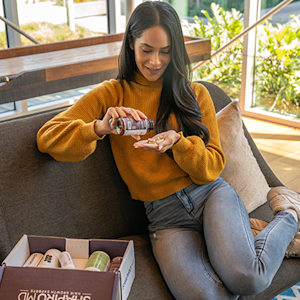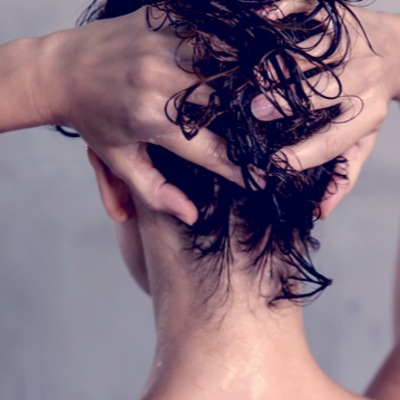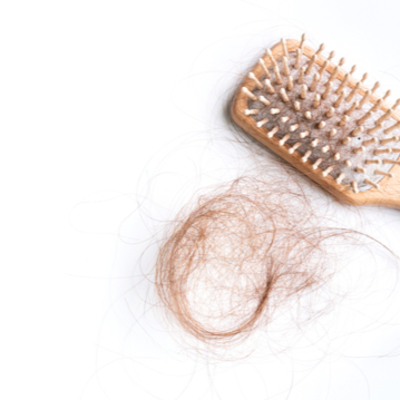Do Laser Combs Actually Work? The Science on Laser Light Therapy
2022-02-03
You’ve seen them advertised online and on late-night TV, and you’ve always wondered if they actually work.
I’m here to tell you that laser combs and laser caps are the real deal when used consistently.
They work for hair growth in both men and women; they’re easy to use; the science is supportive; and laser combs and laser caps can improve density.
Here’s the scoop.
What is a Laser Comb for Hair Growth?
Approved by the U.S. FDA in 2007 for treating male-pattern and female-pattern baldness (androgenic alopecia) and alopecia areata (spot baldness), laser combs use low-level laser technology (abbreviated LLLT) to encourage hair regrowth.
LLLT therapy uses “biostimulatory” light energy at specific wavelengths that have been found beneficial and safe for hair follicles and skin. Because of their safety and efficacy profile, laser combs are FDA-approved for treating androgenic alopecia or alopecia areata.
The research on LLLT is encouraging: laser combs can help accelerate hair growth.
Does Laser Hair Growth Work?
Hundreds of studies have proven that near-infrared laser light or red laser light supports the regeneration and repair of damaged tissues while LLLT therapy stimulates cellular metabolism.
Medical devices providing these two types of laser therapies emit laser energy wavelengths between 500 and 1100 nm, which is considered the "optical" window for tissues.
Joint pain relief, accelerated wound healing, regeneration of impaired nerves, and reducing side effects of cancer radiation therapy are just some of the medical conditions that LLLT has been effective in treating.
In addition, the evidence showing that laser combs can help stimulate hair regrowth has been clinically validated and scientifically explained.
Laser light therapy works.
When LLLT therapy is directed at hair follicles, the laser energy activates and prolongs certain phases of the hair growth cycle that are conducive to longer hair growth. Scientists think that LLLT stimulates mitochondria activity in cells to increase cellular energy. This process triggers the rapid production of proteins that, in turn, increase oxygen levels in tissues. Some research on laser hair growth also suggests that LLLT therapy for baldness raises nitric oxide levels around hair follicles. Nitric oxide (NO) is a vasodilator that widens blood vessels to allow blood to flow more freely to targeted areas.
Academic reviews of studies involving the effectiveness of laser hair combs have also found that LLLT:
- Generates anti-inflammatory antioxidants and molecules
- Stimulates hair follicles into transforming vellus ("peach fuzz") facial hair into terminal (darker, thicker) hairs
- Accelerates the division of skin cells to continuously repopulate skin and follicle with healthy cells
- Stimulates dormant hair follicles in the final stage of hair growth to “reboot” and start producing new hair faster
How Do You Use a Laser Comb?
Using a laser comb is similar to combing your hair. Before applying LLLT to your hair follicles, wash, dry, and comb out your hair to remove tangles. Next, plug in the comb and turn the comb on if it has an on/off switch. Some laser combs turn on automatically once they are plugged in.
Some combs have specific instructions, and it’s important to read your product’s manual and warnings before use.
There is generally no need to wait for the laser comb to warm up. Position the comb on top of your head so that it’s lying flat against the scalp. Hold the laser comb in that position for four seconds, or until the laser comb tells you four seconds have elapsed. Some combs are not equipped with notification alarms so you may have to count the seconds. Some combs may have differing time periods too.
Keep moving the laser comb over your scalp every four seconds. Make sure the comb touches all areas of the top, sides, and back of your head. Laser comb manufacturers provide detailed instructions with their devices. You can usually safely use a laser comb three times a week. Application sessions typically take about 20 minutes. In addition, manufacturers provide different sizes of comb teeth to accommodate different degrees of hair loss and hair thickness.
The majority of people using laser combs for hair loss report seeing visible results after three months of consistent applications.
Do Laser Combs Cause Any Side Effects?
Side effects of laser combs are usually mild and temporary. Common side effects include:
- Dry skin
- Scalp sensitivity and irritation
- Slight burning or prickly sensations
- Hives (rare)
The first several LLLT therapy sessions may produce one or more of these minor issues but they tend to resolve themselves within two to three weeks of using a laser comb.
What is a Laser Hair Growth Cap?
Laser hair growth caps are approved by the FDA for treating androgenic alopecia and alopecia areata.
Resembling a small helmet or cap, a laser hair growth cap fits over your head and automatically delivers LLLT therapy to all of your hair follicles at once. Caps come with rechargeable battery packs generally, so there's no need for you to remain near an electrical outlet.
Made of lightweight, plastic material, laser hair growth caps are sometimes packaged with pieces of foam padding you can place underneath the cap to create a custom fit. While wearing the cap, you can do most daily activities as long as those activities don't cause the cap to move around on your head.
Laser hair growth cap manufacturers recommend wearing the cap for 25 minutes every other day for at least six months. However, some companies that make laser caps claim their caps produce results in as little as 12 weeks.
Given the length of each hair growth phase, it’s likely that you’ll see better outcomes by wearing it for a longer period of time.
Many people prefer laser caps to laser combs because they can be used on the go or while sitting around watching TV or otherwise. They also require no effort on the part of the user. Because they part the hair as they go, combs may be able to get their LLLT further down through the bed of hair depending on your hair thickness.
Laser Combs/Laser Caps vs Finasteride and Minoxidil
Finasteride (Propecia) is a prescription medication that stimulates hair regrowth in men with androgenic alopecia. It’s the only oral medication approved by the FDA.
A primary reason for hair loss associated with androgenic alopecia involves excess dihydrotestosterone (DHT) in the person's bloodstream. DHT is a derivative of testosterone that contributes to damaging hair follicles and causes hair loss. It’s believed to be the key factor in male and female pattern baldness.
Finasteride reduces DHT in the body to promote hair growth and follicle health. However, since finasteride specifically treats hair loss attributed to excess DHT, it will not work for people who have lost hair due to medical conditions or chemotherapy. Finasteride is not safe for use in women.
Minoxidil (Rogaine) is available as an over-the-counter treatment for hair loss. A vasodilator that was first doctor-prescribed for high blood pressure, minoxidil is thought to promote hair growth by increasing blood flow and oxygen to hair follicles. It’s been available over-the-counter (OTC) for hair growth in men and women for about 30 years. It’s effective and safe for most people.
Finasteride and minoxidil have shown in studies good results in producing thicker, more dense hair.
What’s better: laser caps or finasteride and minoxidil?
Finasteride can cause side effects in men that include:
- Headache
- Erectile dysfunction/reduced libido
- Male breast growth
- Depression
Minoxidil can cause side effects in men and women that include:
- Skin rash/itching/irritation
- Reddened skin
- Prickling or burning sensations on the scalp
- Feeling of soreness at hair roots
A few individuals who start taking finasteride or minoxidil will find they must discontinue the use of treatment due to worsening side effects.
A viable alternative to pattern baldness medications is laser hair growth combs or laser hair growth caps. Neither the laser hair growth cap nor the laser comb requires a prescription and side effects from LLLT therapy for hair growth are minimal to none.
Here’s the thing: these medications and LLLT can also work synergistically. To give your follicles their best shot, many dermatologists recommend combining minoxidil with laser cap use.
Does Laser Hair Growth Work for Everybody?
Like minoxidil, finasteride, and other hair loss treatments, laser caps or laser combs are most likely to provide great results for men and women with mild to moderate hair loss.
When androgenic alopecia or alopecia areata has progressed past the moderate stage to large bald patches, doctors may recommend more aggressive approaches for late-stage pattern baldness, like custom topical formulas.
The clinicians at Shapiro MD can help. We carry all of the most effective medications and hair growth solutions, including our own laser cap, finasteride, minoxidil, and our own patented shampoo and conditioner formulas.





